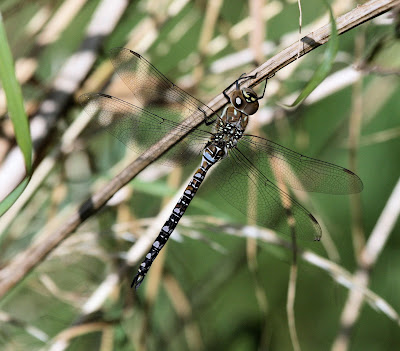Trichomoniasis is
becoming a larger threat to British songbirds on a national level but is still
not really prevalent in the North and East Yorkshire areas. In July five
greenfinch were found dead in close proximity to one another in the
Lockton/Levisham area, three of these birds had been rung in Dalby less than 5
miles east. The sudden localised increase in mortality rates, is suggestive of
this or a similar disease. However I am unsure whether any testing was
conducted on these birds and have not seen them, so other possibilities exist.
Regardless this raises the subject of Trichomoniasis as a possible negative
factor on greenfinch populations in the locality.
What is Trichomoniasis?
Trichomoniasis
is caused by a protozoan parasite called Trichomonas gallinae. It
typically causes a yellow plaque like coating and necrosis on the walls of the
throat, mouth, oesophagus and nasal cavities. Occasionally in severe infections
it may spread around the host and affect organs like the liver. Infected birds
are characterized in the later stages by dribbling, regurgitation of food,
labored breathing and have difficulty swallowing. Encountered birds are often
found fluffed up and relatively unresponsive. Where the infection is weak birds
may recover, however typically birds fail to recover and the disease which can
last over several weeks in some cases is eventually fatal. Trichomonas cannot survive for more than a few
minutes outside its host.
Trichomoniasis
commonly occurs in pigeons, however it has been infrequently in other birds
like passerines and raptors, until the recent increase in finch populations. It
is suggested that Trichomonosis was a key factor contributing to
the extinction of the passenger pigeon. In pigeons it usually exists high up in
the throat close to the mouth in the pharyngeal region, whereas finches differ
slightly in having it lower down closer to the oesophagus. It is believed to
have been passed to finches from pigeons, which are a significant reservoir for
the disease.
Recent history in British finch populations.
Trichomonosis emerged as a none specific fatal disease of finches in
Britain around 2005 and rapidly became epidemic within greenfinch, and to a
lesser extent chaffinch, populations a year later in 2006. Originally it was
identified in British Finch in April 2005, this was followed by a further low
mortality of British finches throughout the rest of the year, with a peak in
cases between September and November. During the summer of 2006 the number of
confirmed cases increased dramatically, more so in greenfinch than other
species. Approximately 6300 mortalities were reported, primarily from garden
feeding stations during 2006, this compares with 84 incidents in 2005. By 2007
breeding populations of both greenfinch and chaffinch had decreased by 35% and
21% respectively in some areas, according to one study. This represents a
mortality of over half a million birds. The disease continues to persist in
Britain and is particularly prevalent in the west midlands, Wales and western
Britain. Data collected from BTO and RSPB garden bird studies, contributed to
by the public have shown a marked decline in greenfinch numbers, more so than
other species of "garden" bird.
Relevance to the British greenfinch population
The British greenfinch population increased steadily between the 1980's
and mid 2000's. During 2007 a sudden significant decrease occurred. This is
suggested to have been largely driven by trichomonosis. It is estimated that a
loss of half a million birds occurred around the 2007 period. It is worrying
that no similar rates of mortality caused by infectious diseases have occurred
in wild British bird populations, other records of trichomonaisis from
passerines globally rarely show such a negative impact in a wild population. In
the years prior to 2007 the disease has remained a significant negative factor
on greenfinch populations.
Why are greenfinch so susceptible to Trichomoniasis?
The reasons as to why greenfinch are so susceptible are still largely
unclear. Greenfinch are a species, which could be classed as a highly
vulnerable to infectious diseases. Similar diseases like salmonellosis and
colibacillosis are regularly reported in greenfinch populations. As greenfinch
are highly gregarious, diseases can quickly pass between individuals and remain
viable within the population. Being granivores means that large numbers gather
a feeding stations which further increase contact rates. However trichomoniasis
is not especially prevalent in other birds which gather in high numbers at
feeding stations like tits and sparrows. This suggests that foraging behaviour
is unlikely to be a key factor in making greenfinch so vulnerable alone.
The
significance of feeding stations has increased over the past 50 years, in which
land uses have changed in the wider countryside increasing the species
dependence on them therefore increasing the likelihood of birds coming into
contact with each other. In addition by feeding throughout the summer, the risk
of young birds becomes significantly increased due to feeding adults using
feeding sites then returning to the nest.










